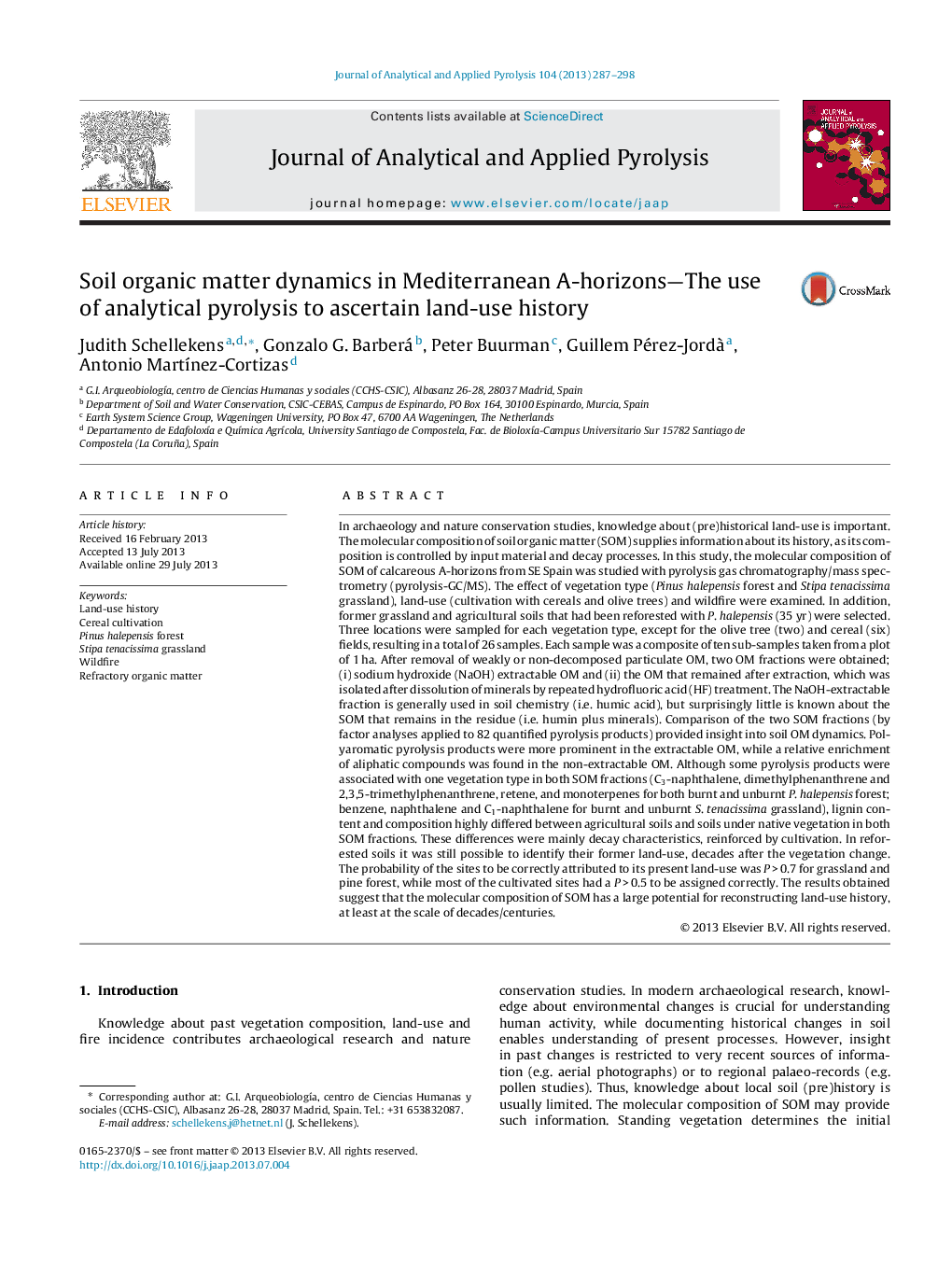| کد مقاله | کد نشریه | سال انتشار | مقاله انگلیسی | نسخه تمام متن |
|---|---|---|---|---|
| 1196790 | 1492973 | 2013 | 12 صفحه PDF | دانلود رایگان |

• The molecular composition of A-horizons under different land-use was characterized.
• We found contrasting composition of NaOH-extractable and non-extractable SOM for each land-use.
• The molecular composition of SOM offers potential to reconstruct soil (pre)history.
In archaeology and nature conservation studies, knowledge about (pre)historical land-use is important. The molecular composition of soil organic matter (SOM) supplies information about its history, as its composition is controlled by input material and decay processes. In this study, the molecular composition of SOM of calcareous A-horizons from SE Spain was studied with pyrolysis gas chromatography/mass spectrometry (pyrolysis-GC/MS). The effect of vegetation type (Pinus halepensis forest and Stipa tenacissima grassland), land-use (cultivation with cereals and olive trees) and wildfire were examined. In addition, former grassland and agricultural soils that had been reforested with P. halepensis (35 yr) were selected. Three locations were sampled for each vegetation type, except for the olive tree (two) and cereal (six) fields, resulting in a total of 26 samples. Each sample was a composite of ten sub-samples taken from a plot of 1 ha. After removal of weakly or non-decomposed particulate OM, two OM fractions were obtained; (i) sodium hydroxide (NaOH) extractable OM and (ii) the OM that remained after extraction, which was isolated after dissolution of minerals by repeated hydrofluoric acid (HF) treatment. The NaOH-extractable fraction is generally used in soil chemistry (i.e. humic acid), but surprisingly little is known about the SOM that remains in the residue (i.e. humin plus minerals). Comparison of the two SOM fractions (by factor analyses applied to 82 quantified pyrolysis products) provided insight into soil OM dynamics. Polyaromatic pyrolysis products were more prominent in the extractable OM, while a relative enrichment of aliphatic compounds was found in the non-extractable OM. Although some pyrolysis products were associated with one vegetation type in both SOM fractions (C3-naphthalene, dimethylphenanthrene and 2,3,5-trimethylphenanthrene, retene, and monoterpenes for both burnt and unburnt P. halepensis forest; benzene, naphthalene and C1-naphthalene for burnt and unburnt S. tenacissima grassland), lignin content and composition highly differed between agricultural soils and soils under native vegetation in both SOM fractions. These differences were mainly decay characteristics, reinforced by cultivation. In reforested soils it was still possible to identify their former land-use, decades after the vegetation change. The probability of the sites to be correctly attributed to its present land-use was P > 0.7 for grassland and pine forest, while most of the cultivated sites had a P > 0.5 to be assigned correctly. The results obtained suggest that the molecular composition of SOM has a large potential for reconstructing land-use history, at least at the scale of decades/centuries.
Journal: Journal of Analytical and Applied Pyrolysis - Volume 104, November 2013, Pages 287–298